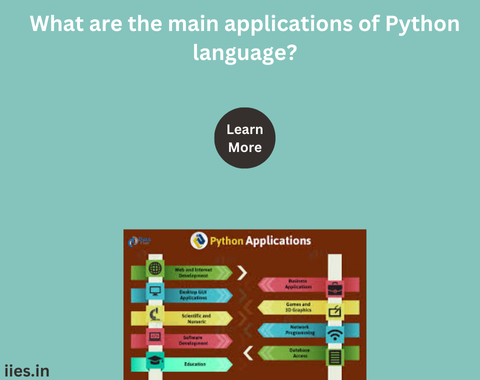1. Web Development
Python is extensively used in web development, thanks to frameworks like Django, Flask, and Pyramid. These frameworks provide robust tools and libraries to simplify the creation of complex web applications.
- Django: Known for its “batteries-included” philosophy, Django offers a comprehensive suite of tools for database management, URL routing, and templating.
- Flask: A micro-framework that provides the essentials, allowing developers to have more control over the components and architecture of their web applications.
- Pyramid: Designed for flexibility, it can scale from small applications to large-scale projects.
2. Data Science and Machine Learning
Python‘s rich ecosystem of libraries has made it the preferred language for data science and machine learning.
- Pandas: Offers data structures and operations for manipulating numerical tables and time series.
- NumPy: Provides support for large, multi-dimensional arrays and matrices, along with a collection of mathematical functions.
- SciPy: Built on NumPy, it provides additional functionality for optimization, integration, and statistics.
- scikit-learn: A machine learning library that supports classification, regression, and clustering algorithms.
- TensorFlow and PyTorch: Popular frameworks for deep learning, offering tools to build and train neural networks.
3. Automation and Scripting
Python is a powerful tool for automation and scripting, allowing users to automate repetitive tasks and streamline workflows.
- Automation of System Administration Tasks: Scripts for tasks like file management, system monitoring, and batch processing.
- Web Scraping: Tools like Beautiful Soup and Scrapy enable the extraction of data from websites for analysis or storage.
- Task Automation: Libraries like Selenium automate web browser interaction, useful for testing web applications.
4. Software Development
Python is also used for software development, offering tools for both rapid prototyping and full-scale application development.
- IDEs and Development Tools: Integrated Development Environments (IDEs) like PyCharm, and lightweight editors like VS Code, enhance productivity with debugging, testing, and version control features.
- Cross-Platform Development: Frameworks like Kivy and PyQt facilitate the development of applications that run on multiple platforms, including Windows, macOS, and Linux.
5. Scientific Computing
Python plays a crucial role in scientific computing, providing tools for research and analysis in various scientific fields.
- Libraries for Scientific Analysis: Matplotlib for plotting and visualization, SymPy for symbolic mathematics, and Biopython for biological computation.
- Integration with Other Languages: Python can be easily integrated with languages like C, C++, and Fortran, allowing scientists to leverage existing codebases and libraries.
6. Financial Technology (FinTech)
Python is gaining traction in the financial sector, offering solutions for various financial applications.
- Quantitative Analysis: Libraries like Pandas and NumPy are used for data analysis and manipulation in financial modeling.
- Algorithmic Trading: Tools like PyAlgoTrade and Zipline allow the development and backtesting of trading strategies.
- Risk Management: Python’s statistical and machine learning capabilities help in assessing and managing financial risks.
7. Game Development
Python is also employed in game development, providing frameworks and libraries that simplify game creation.
- Pygame: A set of Python modules designed for writing video games, allowing for the development of games with 2D graphics.
- Pyglet: An object-oriented programming interface for developing games and multimedia applications.
8. Education
Python’s simplicity and readability make it an ideal language for teaching programming concepts.
- Beginner-Friendly: Its clear syntax and readability help beginners grasp fundamental programming concepts without getting bogged down by complex syntax.
- Educational Tools: Platforms like Jupyter Notebook provide an interactive environment for learning and experimenting with code.
Conclusion
Python’s versatility and extensive library support make it suitable for a wide range of applications, from web development and data science to automation and education. Its active community and continuous development ensure that it remains a relevant and powerful tool in the ever-evolving landscape of technology. Whether you’re a beginner looking to learn programming or an experienced developer seeking to expand your skill set, Python offers a wealth of opportunities to explore and innovate.
